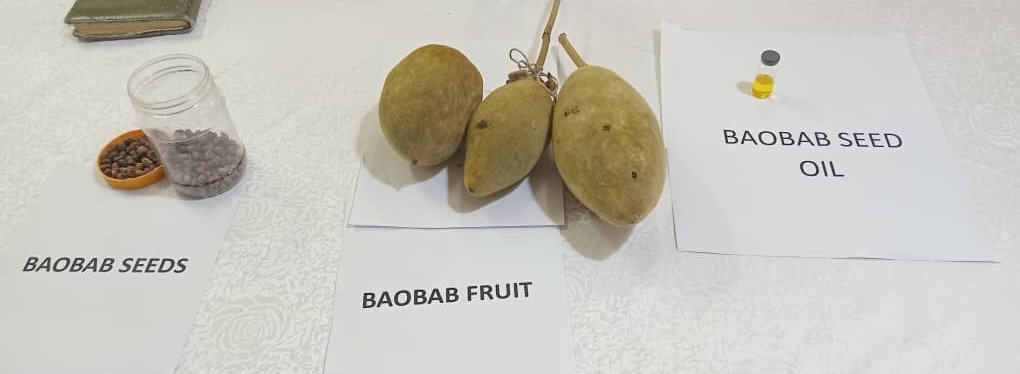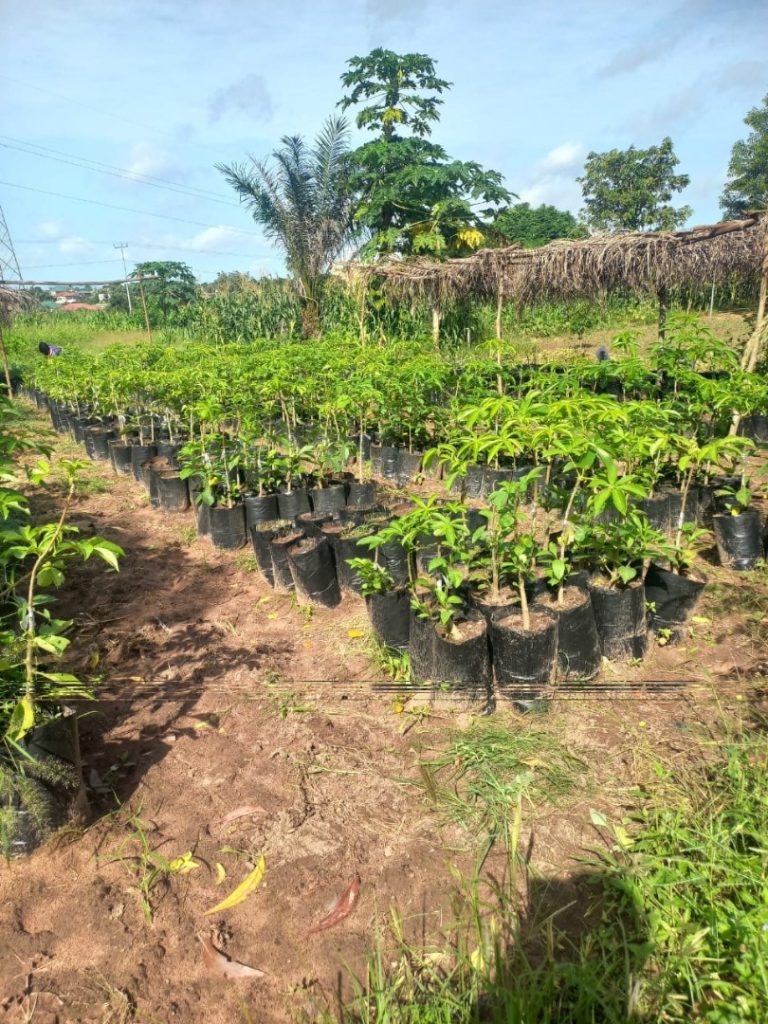GNA Feature by Maxwell Awumah
Ho, Oct 06, GNA – The vision of Ho Technical University (HTU) is to become the hub of practical education and innovation advancing sustainable global solutions and development.
With this vision, the HTU develops and supports innovation in all spheres, one of which is the baobab domestication initiative.
Benefits of baobab
Baobab, with scientific name, Adansonia digitata, is a Pan-African priority wild plant and found in the southern Arabian Peninsula, and having its species being an integral part of the African landscape for centuries.
It is culturally, economically, and environmentally significant as it is highly nutritious, has several medicinal properties and could be used for the provision of food, feed, clothing, medicine, protection (shade), non-wood forestry products, and raw materials for other industries are just a few examples.

Practically, the plant plays key roles in the economy of many rural and urban dwellers in Africa and has high potential to improve nutrition and economic life of Africans.
But it is underutilized despite its time-tested attributes and is facing severe threats due to factors such as deforestation, disease, and climate change, among others.
In addition, the wild baobab trees are over-exploited in some communities and to ensure the survival of the species and its optimum utilization, was the need for research and domestication of the tree.
Researchers
Researchers of the Department of Agricultural Sciences and Technology of the HTU, who have been re-engineering the African baobab plant is attracting global interests as some research institutions are seeking partnership with the University to broaden the research scope, in furtherance of this feat.
Professor Kenneth Fafa Egbadzor, the lead researcher and colleagues from the HTU, in the last three years, have through research from laboratory to field reduced to 27 months the first fruiting period of the baobab plant.
Hitherto, it takes baobab at least 14 years in West Africa and between 17-27 years elsewhere to flower.
The team have opened a new lever in its research protocol by further re-engineering the plant to witness a lesser maturity period with the latest results, in an outlier showing much shorter success rate with more determination to still cut back on the period.
According to the lead researcher, the team is working hard to “improve” its size for easy domestication and commercial multiplication.
He said though baobab has several hundreds of uses, traversing various industries, including pharmaceuticals, food and beverages, cosmetics and arts, wild natural occurring baobab plant cannot meet local and international demands unless introduced into mainstream agriculture.
He called for duty-bearers’ attention to the wonder plant, which could yield more economic value than the country’s cash crop, the cocoa, for the Savannah and agro-ecological zones of Ghana.

He said like human beings, baobab trees also have ‘genotype variability’ with distinct characteristics like the three-year-old one being targeted for fruit production throughout the year with others being groomed for oil production, leaf as well as glue production.
“We want the Volta region to take the lead in the baobab project.
“People have already started to copy us, but they have not gotten it, we must be faster than them and we must call on other researchers and institutions to assist in commercialising the tree.
“We the academia have done our research, now we are calling on the government, development partners, NGOs, and the business and industry people to come on board. We can have someone sponsoring just the oil aspect, we develop that aspect and become commercial and benefit people.”
“We have some genotypes here that we believe are higher in nutrients because on the field we see that the insects are eating them more than the others and what this means is those ones are more palatable and higher in nutrients, so the wise insects tend to eat those leaves, the Lead Researcher said.
Partnership
Aside HTU, all other sponsorships for the baobab project are from outside the country; South Africa, Finland, with Germany, also coming on board.
Specifically, the HTU had recently signed a Memorandum of Understanding with a team from Spearhead Spirit, South Africa to deepen research innovation into the wonder plant in a bid to collect its gem plus to aid their research.
Other collaborative Universities include; Turku University, Finland; Stanfordshire University, UK; Rhine-Waal University, Germany and Jyvaskylla University, Department of Applied Sciences, Finland are directly or indirectly collaborating with HTU.
Prof Egbadzor indicated baobab tree was on the agenda of a recent trip to Dakar, Senegal with the administrators of the Association of Technical Universities in Agro-Enterprise Development saying the plant is becoming a global matter.
That country, who are also involved in baobab innovation have expressed interest in collaborating with HTU as Senegal abounds in wild baobab cortex, especially in its northern part.
Attributes of Baobab or Monkey Bread tree.
In African traditional medicine, baobab fruit pulp is used to treat fever, diarrhoea, dysentery, smallpox, measles, hemoptysis (the coughing up of blood), and as a painkiller.
One study found that baobab powder improved sperm quality in rats, while another found that it increased egg production in mice. Baobab is also a reliable source of antioxidants, which are important for reproductive health. Magnesium, zinc, and vitamin C contents in the fruit of baobab are unmatched.
Again, research shows domestication and cultivation of baobab plants could help address the climate change crisis in Ghana and Africa. The plant holds prospects to absorb warm air and cause positive changes in the atmosphere to address global warming. The plant’s propensity to retain water in the tissues in its trunk even during the dry season positioned it resilient to fight climate change.
Along with the dwindling population of baobab trees, the plant has a long growing period, and this characteristic poses a big challenge to its cultivation. However, to mitigate the human impact resulting in the decreasing baobab population, and promote its cultivation and utilization, HTU has developed a protocol that resulted in demonstrating positive traits.
Additionally, with continuous diverse and in-depth study of the baobab, efforts made resulted in flowering of the baobab tree in just one year after planting, a feat that the researcher are still digging.
Baobab Research Centre
The HTU research team intends to bring baobab cultivation into mainstream farming and has made the following efforts to facilitate that: supplied baobab seedlings to some farmers for cultivation; continued research on the multipurpose species to get optimum benefit; requests governments, NGOs (Non-Governmental Organisations), businesses, and the public for support in baobab research to achieve this goal.
HTU intends to establish a state-of-the-art baobab laboratory to further delve into the generic and agronomic studies to promote the product, develop baobab-based foods and non-food products and seek international trading.
Other key researchers on the baobab project are Dr. Jones Akuaku, Dr. Asiwome M. Akumah, Dr. Godwin S. A. Horlu and Dr. Jennifer E. Adaletey.
The HTU team believed that baobab holds a huge prospect comparable to cocoa or gold.
“We are drawing attention to the government and partners to consider adding baobab under its tree crop diversification project to aid tree crop development as being done in the research and development on various strains of coconut, cashew, mango and rubber for easy domestication.”
They urged state and non-state actors as well as industry, corporate entities, and academia to collaborate.
Prof Ben Q. Honyenuga, Vice Chancellor of HTU said the University is poised in breaking new ground through innovative research to respond to humanity’s pressing issues and stated the baobab initiative is just the beginning.
“While some talk, we play action,” he boasted.
“We can now scale up the cultivation of the cloned baobab seedlings, to enable the HTU’s Food Technology Department process the fruits into various menus.”
He called for external support to deepen the research capacity of the University in other areas.
GNA